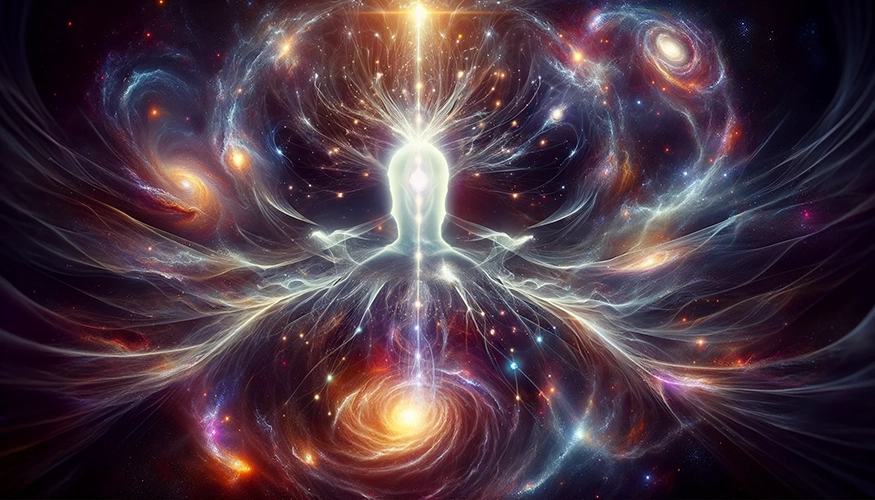2.6.2 Axioms Part 2: Descriptive Axioms
Coherent descriptions of the world require two types of axiomatic statement. Within an axiomatic set, there needs to be at least one ontological declaration, i.e. at least one statement that something exists, otherwise there would nothing to describe. A list of assumptions about the properties of those entities can then be stated.
Descriptive axioms are ordinary declarative statements or propositions. Their special significance, if such exists, only arise due to their implications for a wide variety of subsidiary propositions that we might wish to formulate. In other word axioms have implication for all of the other propositions that can be formed within a formal or informal belief system. From a social constructivist perspective, descriptive axioms could also be seen as widely held beliefs shared by identifiable groups of individuals ‘who read the same kind of books’ and interact intellectually with each other on particular topics (to paraphrase Richard Rorty).
A series of obvious examples scientific and social domains of thought makes the idea of axioms clearer. The areas of thought described below are particle dynamics as described in classical physics, the atomic basis of chemistry, biology of the cell, and the axiomatization of a god in monotheistic religions.
1) Classical Physics

In the branch of classical physics known as particle dynamics (or mechanics) there has been a deductive mathematization of the belief system, so there is a need to declare the existence of idealised ‘primitive’ entities that are used in the mathematical equations. It is important to note that the following list does not apply to modern quantum and relativistic physics or cosmology. An informal statement of the core beliefs in classical mechanics might be given as follows:
a) Discrete free particles exist. (The term ‘particle ‘is used loosely here to refer to bodies of various sizes.)
b) 3-dimensional space exists
c) A theoretical point exists within particles that can be used to describe a particle’s position within space. By convenience that is taken to be a central point (or geometric centroid or centre of mass).
d) Space is continuous (that is not granular or composed of parts) .
e) Space is rigid, i.e. non-deformable.
f) Some kind of frame of reference can be specified within space.
g) The frame of reference need not be still with respect to the observer (although it cannot be accelerating with respect to the observer)
h) The position of particles within the frame of reference can be invariant or still.
i) Particles can change their position within the frame of reference.
j) Positions within the frame of reference can be measured in an arbitrary way with a ruler of some kind.
k) Forces exist which can change the position of particles within a frame of reference. (This assertion says nothing about how forces originate i.e. it does not explain causally.)
l) Forces can sum together to produce a resultant or net force (vector).
m) Movement of a particle can mean a translocation in space or a rotation around the theoretical centre or a combination of both.
n) There is no theoretical limit to the speed at which a free particle can move.
o) Particles have the property of mass.
from LB.OKun in 2008 we learn that
1. Mass is a measure of the amount of matter.
2. Mass of a body is a measure of its inertia.
3. Masses of bodies are sources of their gravitational attraction to each
other.
4. Mass of a composite body is equal to the sum of masses of the bodies
that constitute it; mathematically that means that mass is additive.
5. Mass of an isolated body or isolated system of bodies is conserved:
it does not change with time.
6. Mass of a body does not change in the transition from one reference
frame to another.
p) Time exists and is independent of space and mass.
q) Time passes at a uniform rate that can be measured by arbitrary sized repetitive cycles of a clock.
r) Energy (in the absence of gravitational, magnetic electrical or nuclear forces) is defined as momentum, that is the movement of a mass in a linear or rotational fashion.
s) For a more complete classical treatment of forces that can act on a discrete free particle, there also needs to be the concept of fields and forces within space that are electric, magnetic, nuclear, and gravitational. When these entities are declared, there then exists the additional possibility of potential energy resulting from the position of a particle within a spatial field.
The very long list of declarations above makes it clear we need some form of logic to tie them together into a coherent system. So it is that these primitive entities and definitions are then used as the basis of the so-called ‘laws’ that are expressed as mathematical formulae. It is worth noting that the formulae do not and perhaps cannot in themselves encode the axioms.
One of the central philosophical conclusions reached by philosophical contemplation of these core beliefs is that classical mechanics is deterministic. Given the axioms and the laws, the same events will be reproduced given absolutely identical initial conditions. However, that statement is an idealisation that would not even measurably apply to one game of snooker.
2) the Atomic Nature of Chemistry
In chemistry, the idea of the atom (and the void) was first developed in ancient Greece. With that exception, the present descriptive core beliefs of modern chemistry started to develop from the 17th century onwards. The axioms of chemistry are largely centred around the existence of the atoms and the properties of their electrons. The descriptive axioms of chemistry are tremendously important because they are central to the human acts of analysing, creating or refining all substances, understanding the nature of chemical reactions and the biochemistry of life.
As before we start by declaring the existence of things.
a) Atoms exist.
b) Subatomic particles exist.
c) Atoms consist of subatomic particles.
d) All atoms consist of a nucleus and at least 1 surrounding electron.
e) Atoms can lose or gain electrons forming electrically charged ions.
f) Different types of atoms called chemical elements exist.
g) The different types of atoms consist of varying combinations of the same subatomic particles.
h) There are subtypes of elements (isotopes).
i) The nuclei of some isotopes are unstable.
j) Different types of atoms (elements) have different chemical properties.
k) The electrons surrounding the atomic nuclei can interact with those of other atoms.
i) Stable (or quasi-stable) interactions can occur between atoms (i.e. chemical bonds exist).
l) Molecules exist that combine the same or different atomic types through chemical bonds.
m) Chemical reactions occur that transform inter-atomic bonds and result in the formation of multi-atomic structures.
n) All chemical reactions lead to an increase in disorder (entropy or energy distribution) within the universe. (The Second Law of thermodynamics)
o) Chemical energy exists.
3) Biology of the Cell
In biology, there is a very long list of core beliefs since the study and diversity and interrelationships of living things and their environment is much more complex than any other branch of the natural sciences by many orders of magnitude. A few of the central ideas concern the nature of cells:
Life consists of replicators that store the information required to reproduce themselves
The replicators are cells.
All life form are cellular
Cells evolved from a pre-biotic state.
Life on earth evolves as the information storage system changes
All cells have a related or common origin.
Different types of cells exist
Cells have a boundary.
Cells contain an information storage system.
Cells contain an information translation system.
Cells can survive and reproduce either singly or within multicellular organisms.
Superficially, it might not seem that the existence of cells is very profound. However, since the cell is the unit of all biological existence and replication, there can be no scientific understanding of living things or their relatedness and evolution without the idea of these replicators. It is the universality of cells that make them so important. It is worth noting that the existence of cells was initially discovered by amateur scientists using very simple microscopes. Descriptive axioms as we can see in this example can arise from the interpretation of observations that have arisen through the development of technology.
Monotheistic Religions

In most if not all of the monotheistic religious faiths the central theological axioms concern the existence of a God or ‘Prime Mover’
a) There is a God
b) There is only one God (the axiom of uniqueness)
c) God is omnipresent (present everywhere or without place)
d) God is enduring (God had no beginning and will have no end)
e) God is omnipotent (all-powerful and all-knowing)
f) God is transcendent (non-material and not restricted by the axioms of physics)
g) God is immanent (is manifested in the material world)
h) God created the universe
… and so on
Notice that the first axiom on this list above is ontological because it declares the existence of God. It seems more fundamental than the others because in the absence of this statement there is no God to describe. Rejection of the first axiom (by hundreds of millions of agnostics, and non-theists like me), has a more profound intellectual significance for it simply renders the others meaningless. It is clear from the list above that in some areas of belief descriptive axioms are not subject to logical or observational proof and predictive testing but merely the acceptance or rejection of conjectures. In the case of religions, these conjectures are by definition supernatural since they exist outside of what we accept as natural. In the epistemology of science, it is now axiomatic that no scientific explanation can exist outside of nature. If such explanations are posited then they are not scientific.
Descriptive axioms are clearly of importance in the way we develop an epistemology.
Version 1.6
Steve Campbell
Glasgow, Scotland
2017, 2019, 2024, 2025